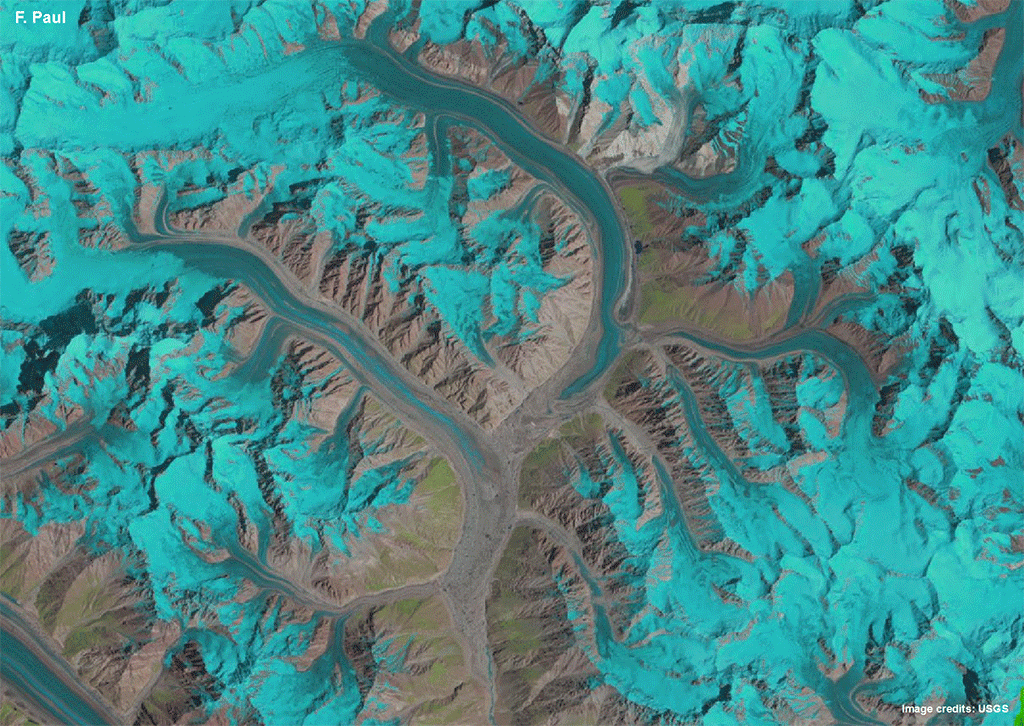Introduction to ice flow#
One of the most remarkable facts about ice is that under certain circumstances it flows under its own weight like a fluid. This is one of the things that excites glaciologists the most about their subject. The ice we are referring to here is not some exotic family of ice that is softer than the frozen water we experience in our every day lives. It is in many ways similar to the ice you make in your freezer and it behaves in many of the same ways: if you threw a chunk of this ice at a hard surface it will shatter, if you were walking on this ice and you fell over it would hurt as much as falling on concrete. And yet, when enough water ice gathers in one place it flows under the influence of gravity.

Fig. 1 Using fifteen images from Landsat, this animation compresses 25 years of change into 1.5 seconds to reveal the complex behaviour of the surging glaciers in the Panmah region of the Karakoram mountain range in Asia. Glaciers are shown in pale blue, snow in light blue to cyan, clouds in white, water in dark blue, vegetation in green and bare terrain in pink to brown.#
Ice flow is not just a curiosity. It is one of the key components of glacial systems. This is because it controls how ice sheets and glaciers grow and shrink. To understand this we will first need to discuss how ice sheets and glaciers gain and lose mass and how this depends location across glaciers and ice sheets, then we will look at some data that reveal how the Antarctic Ice Sheet flows, then we will build an ice sheet model, starting from simple theory.
